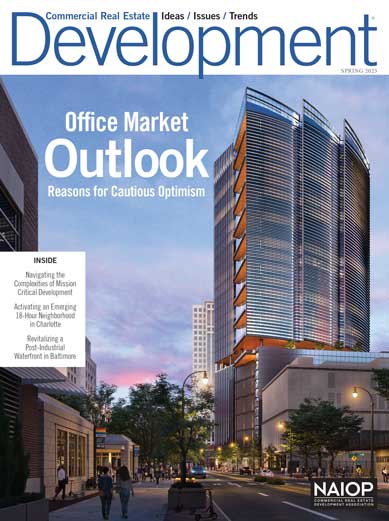The Logistics Building of the Future
A new prototype aims to solve the challenge of putting industrial facilities in dense urban areas where land supplies are constrained.
A limited supply of experienced workers pushes wages higher.
A new prototype aims to solve the challenge of putting industrial facilities in dense urban areas where land supplies are constrained.
Products such as concrete and flat glass are seeing record-setting price increases.
Developers need to think strategically to support sustainable, healthy work environments.
Each CRE property type experienced growing construction activity, led by manufacturing.
Urbanist Richard Florida sees downtowns evolving from destinations for work into “better neighborhoods.”
Rolling request-for-offers model aims for flexibility as the facility grows.
Developers must find new ways to configure workspace amid challenging times for the sector.
An up-close-and-personal look at the NAIOP-Drexel Summer Real Estate Program, which inspires students of color to build careers in commercial real estate.
Profiling the tenants in an innovative industrial building in Vancouver, British Columbia.
A Rust Belt city rebounds thanks to catalyzing state and federal investments.
 Summer 2025 Issue
Summer 2025 Issue
Development’s summer 2025 issue explores experiential retail and the brick-and-mortar resurgence. Also featured: a modern warehouse campus in Toronto that honors its manufacturing heritage; a coalition of Oregon real estate organizations working to revitalize downtown Portland; and the creative capital stack strategy behind a mixed-use project in West Baltimore.
 Spring 2025 Issue
Spring 2025 Issue
The spring 2025 issue offers insights about where the office market might be heading over the coming year, explores the complexities of mission critical development, and provides detailed looks at two transformative mixed-use projects: The Bowl at Ballantyne in Charlotte and Baltimore Peninsula in Maryland.
 Winter 2024/2025 Issue
Winter 2024/2025 Issue
Development magazine’s winter issue delves into the evolving uses of artificial intelligence in the commercial real estate industry, from lease management and building operations to portfolio assessment and data analysis.
